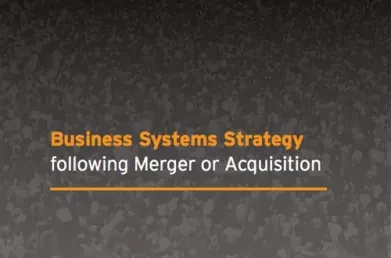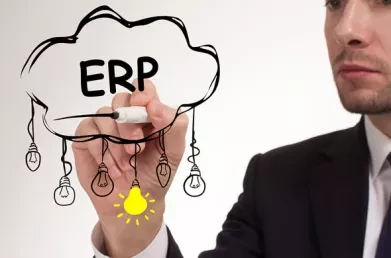Stock Management in Retail– Part 2: ERP System Requirements
In an earlier blog, Stock Management in Retail ERP Part 1: Functionality to Consider, I talked about some of the ERP functionality available for stock management in retail - demand forecasting, stock optimisation and stock replenishment. When selecting an ERP system, what requirements should be considered in these areas?
The key requirements to be considered when looking at ERP stock management functionality will vary depending on your business and your strategy and approach to stock holding, but I have included some things you might want to consider below.

- Does the system operate at an SKU and store level to:
- Track and record actual demand?
- Calculate dynamic thresholds, taking into account the replenishment cycle
- Consider economic order quantities, discount quantities and minimum buys?
(It might seem obvious, but not all systems do this.)
- Does it use a variety of statistical forecasting methods to calculate expected demand but also allow you to take into account other factors such as seasonality, product replacements and outliers (e.g., demand peaks) that are unlikely to reoccur?
- Does it have the flexibility to produce a consolidated long term forecast to be used for re-ordering from suppliers or manufacturers with longer lead-times and also have the capability to use actual demand to trigger store level replenishment?
- Does it allow users to collaborate to amend the proposed forecast and allow you to run simulations based on expert knowledge (e.g., surveys; competitor information; expected promotions) and other activities that may impact demand?
- Does it provide real-time visibility (or as near real-time as possible) of stock throughout the supply chain at both store and overall company levels, with immediate alerts to stock-out and over-stock situations?
- What capabilities does it have for stock profiling and segmentation to simplify analysis and decision making?
- Can it propose optimal replenishment cycles, taking into account store opening times and transport efficiencies?
- Is cycle counting functionality available and easy to use in the store? This will ensure accurate stock levels are used for replenishment and order proposals.
- Are the stock transfer/receipt transactions efficient and/or automated to increase accuracy and minimise time spent by store staff processing receipts?
- Does it have collaboration capabilities for use throughout the supply chain, with functionality for Vendor Managed Inventory (VMI) or Collaborative Planning, Forecasting & Replenishment (CPFR)?
These are just some of the requirements I have encountered while assisting retailers select ERP. This is not a comprehensive list: so, it is important that during the ERP selection process, you carefully consider your specific needs and drivers to ensure that you capture and document those requirements that differentiate your business.
This blog was written by Ursula Browne, Managing Partner at Lumenia. If you would like further information on ERP Stock Management in Retail or on any other aspect of ERP please send an e-mail to Ursula Browne.


